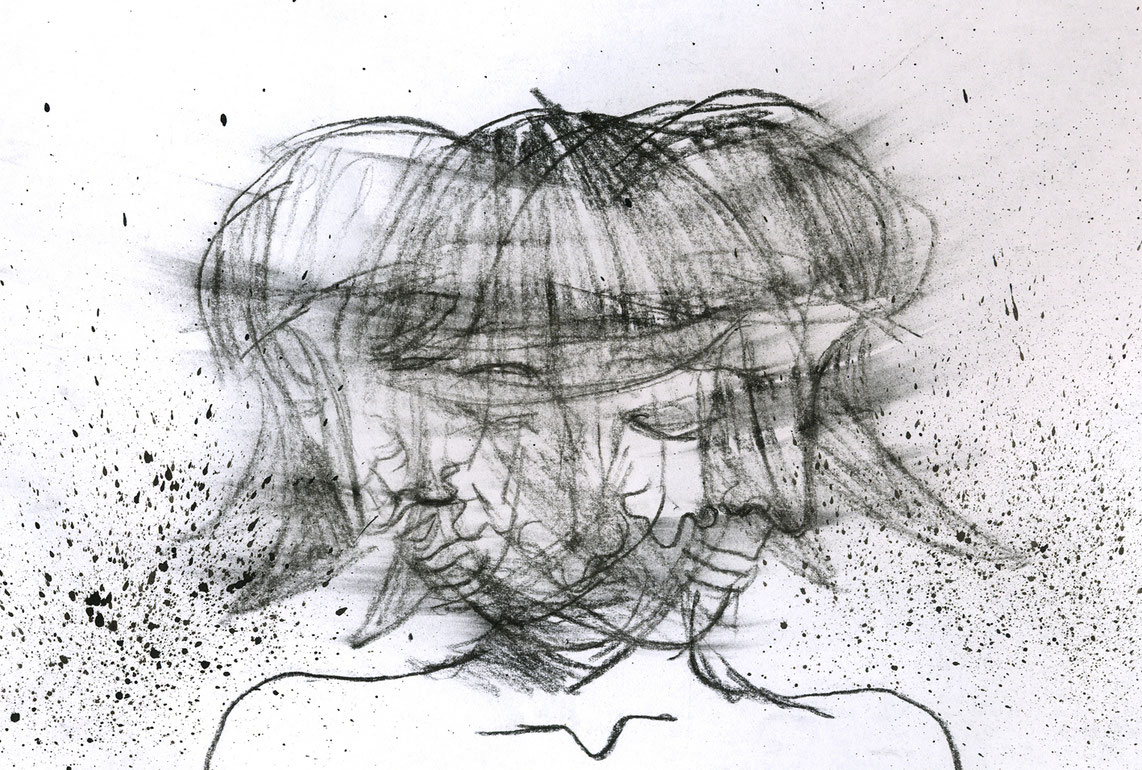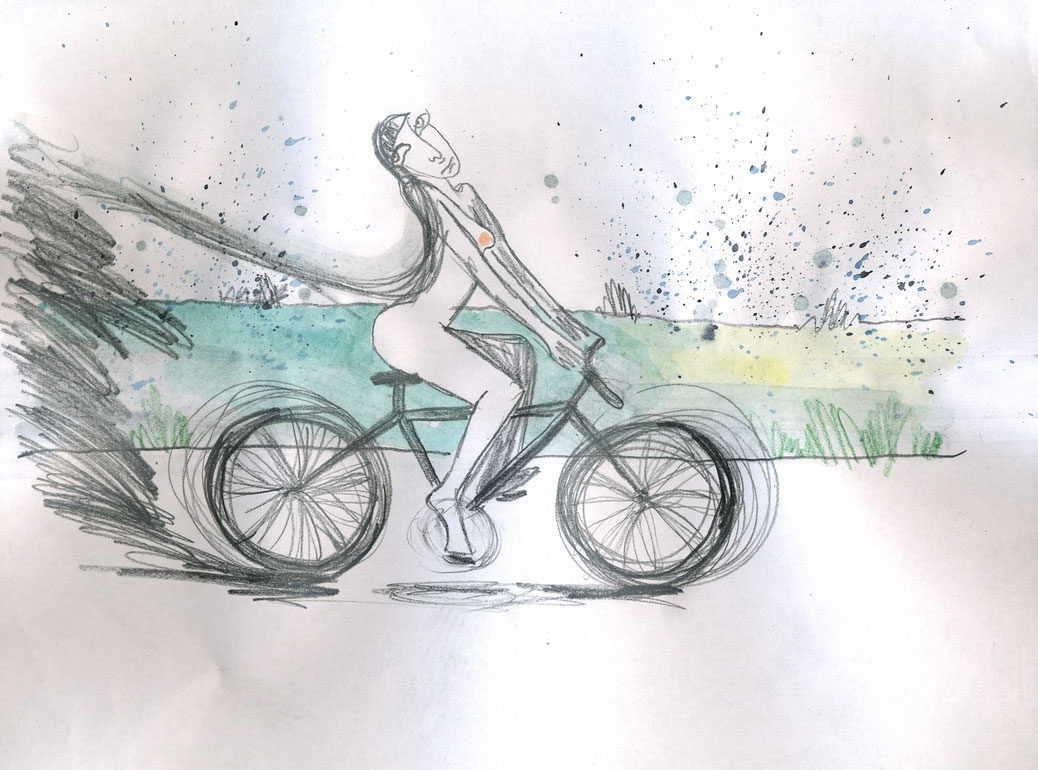Wibbel-Ich & Glück
Janina Arendt´s animation Wibbel-Ich & Glück is strongly rooted in traditional artistic drawing techniques, yet the artist consistently transfers this gesture-based practice to the present. Her animated watercolor and gouache drawings perhaps do not possess a David Shrigley-type nihilism, but nonetheless, they have a similar charge of energy and in contrast to many other watercolors are powerful and direct. Arendt´s cinematographic self-reflections and meditations can most certainly be related to the animation films of Maria Lassnig, which were preceded by so-called body-awareness drawings. Arendt, too, combines personal elements and feminism without falling prey to dogmas.
Her filmic-graphic study Wibbel-Ich & Glück lives from the lightness of a daydream. The rhythmic pulsation of the pictures results from the animation of drawings on paper. In contrast to classical cartoons on foil, this leads to a highly charged anti-perfectionism. In this context, the material of the drawing and the animation seem to merge with the artist´s physical experiences. Along with these strong references to drawing and to creative independent animation films, also noticeable is a similarity to performance. Everyday movements can be seen, but also minimal choreographies. Yet in no way is Arendt´s visual world hermetic; it also uses music in an attempt to draw those engaging with it into the atmosphere of its state of mind. With a great lightness and up-beat attitude, Janina Arendt maintains a distance to the beholder, for she neither suggests naïveté nor attempts to develop a personal profile of herself. (Ulrich Wegenast)
Translation: Lisa Rosenblatt
Wibbel-Ich & Glück / texte français
À la croisée du cinéma et du dessin, son étude "Wibbel-ich + Glück" a la légèreté dune rêverie diurne. La pulsation rythmique des images est due au fait que les dessins, avant dêtre animés, ont été tracés sur papier ce qui, contrairement au film danimation classique réalisé sur celluloïd, leur confère une non-perfection pleine dattrait. A cet égard, le matériau du dessin et de lanimation semble se fondre avec les expériences corporelles de lartiste. Outre ses références notoires au dessin et au film danimation artistique de la scène indépendante, cette uvre frappe par sa parenté avec la performance. On y distingue des séries de mouvements appartenant au quotidien, mais aussi de minuscules chorégraphies. Lunivers visuel dArendt nest pourtant nullement hermétique, cherchant au contraire notamment par le recours à la musique à entraîner les regardants dans latmosphère de son état mental. En dépît de sa légèreté et de sa gaieté, Janina Arendt conserve une certaine distance par rapport au spectateur, car elle ninvoque aucune naïveté ni ne tente de fabriquer un psychodrame sur elle-même. (Ulrich Wegenast)
Traduction: Françoise Guiguet
Wibbel-Ich & Glück
2007
Austria
3 min


